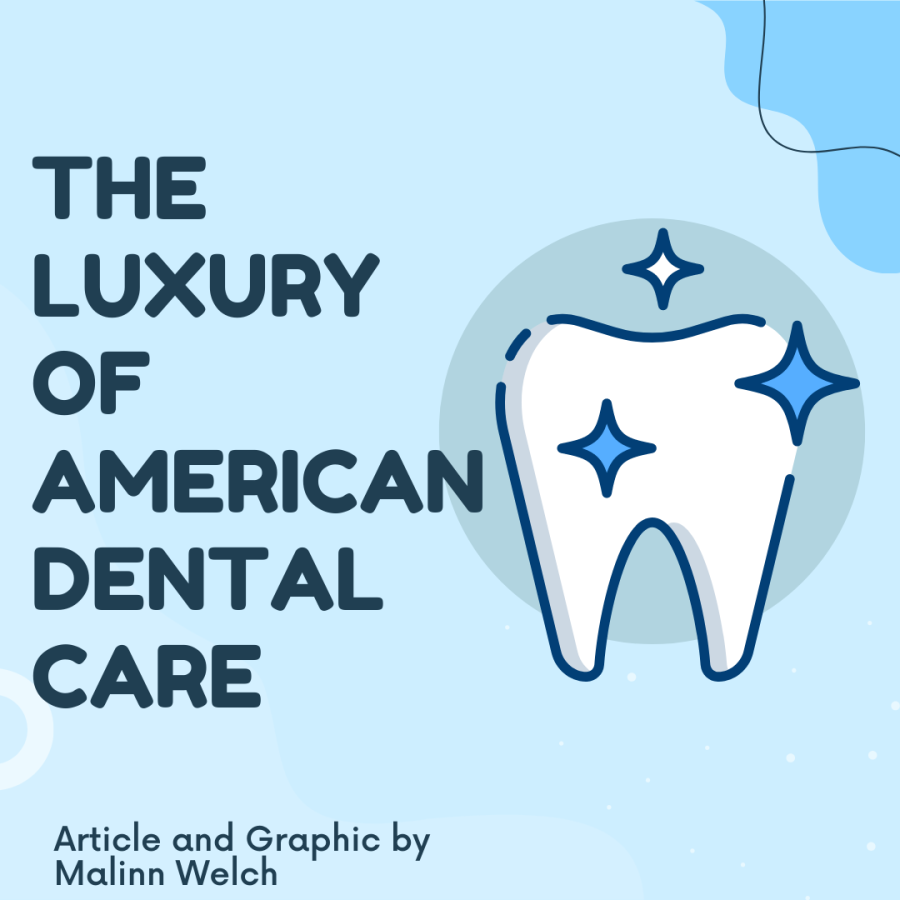The Luxury of American Dental Care
The impact of teeth has stretched far beyond mere dental hygiene. Teeth are a marker of class. Dental and orthodontic care has become the luxury of the middle and high class. Those with “imperfect” teeth are marked with a stigma of unintelligence, low income, and low-class status. Why are Americans so obsessed with having the perfect smile?
Traditional metal braces cost anywhere from $4,000-7,000, but this high price tag comes with benefits extending beyond aligned teeth. Straight teeth are a visual and persistent reminder of class, and this symbolism is instilled throughout childhood. Writer Anne Helen Peterson explains, “Those braces were for my dental health but they were also for my middle-class future … and all of it (pressure of dental care) would be less laden with class baggage if 1) dental care were (rightfully) considered part of the medical care; … But that is not the case – and our teeth become sites of continual middle-class maintenance.”
An estimated 4.5 million Americans are currently undergoing orthodontic care, with 80% of those being 6-18 year-olds. “Metal mouth” has become a rite of passage for middle-class America to secure a place among peers, as the amount of people with braces has quadrupled since the 1960s. This steep price, which is often not covered by insurance policies, has caused teeth to become a symbol of class. Those who can afford this dental care solidify their place in the social hierarchy and strengthen the link between straight teeth, wealth, intellect, and high-class nature.
The luxury of teeth is not a modern issue; the struggles in dental care between the rich and poor have existed for hundreds of years. In colonial/pre-colonial times rich people would rot out their teeth, because they had access to sugar, thus electing for the popularized tooth transplants. These transplants consisted of poor people selling their teeth, or more often enslaved people’s teeth removed against their will, and implanted in the mouths of the rich. George Washington’s teeth were not wood, they were the product of a tooth transplant. This centuries-old conflict highlights the commodity that is teeth among the rich.
“The Hollywood Smile” was a vital aspect of both colonial times and modern stardom. Notoriety often requires perfection, including straight teeth, and those who find themselves in the spotlight without the “perfect smile” often “fix” it as soon as they have the money to do so. In Cardi B’s song “Bodak Yellow,” she raps about the expensive things she bought after she got rich, including “I got a bag and fixed my teeth.” This beauty standard smile is not only prevalent with A-list celebrities but is becoming increasingly popular with young social media influencers. Veneers, a dental procedure to improve the aesthetics of teeth, are on the rise with social media influencers. Veneers cost anywhere from $400-2,500 per tooth. This process often requires you to shave down your teeth, making this a permanent decision and demanding an extensive replacement set every 10-20 years. With Tik-Tok influencers purchasing veneers, both without informing their young audience and as a means to gain views, such as posting before and after videos, young audiences see “perfect” teeth as the only acceptable beauty standard for both life and resounding success.
Dental care is not exclusive to braces and veneers; routine cleanings and dental hygiene come with their own financial and logistical barriers. For those who need financial assistance routine dental maintenance is covered by Medicaid; however, classism and stigmas against impoverished and unhoused people prevent many from such care. In Mary Otto’s Teeth: The Story of Beauty, Inequality, and the Struggle for Oral Health in America, she describes these barriers from within the dental industry, “The participants (Medicaid users) reported that the dentists seemed reluctant to see or touch their children because ‘they are dirty.’ Members complained even more about the office staff, reporting that “dental receptionists made negative comments about their Medicaid status, handling their cards with disdain.” Additionally, a dentist quoted in the book described Medicaid patients as “taking over your entire reception room. They take things home. …We are very nice to them but have to manage them differently. We use words with them we would never use with our other patients.” Otto’s book showcases that many face more than just financial barriers, and the classism rooted in the dental industry becomes a psychological barrier itself.
For those in the upper classes, their teeth are a physical reminder of social and economic status. Those deemed low-class experience physical, logistical, and financial barriers preventing them from achieving these high-class teeth. Does the way your teeth look truly matter?
Your donation will support the student journalists of Enloe Magnet High School, allowing us to cover our annual website costs. We are extremely grateful for any contribution, big or small!

(She/her)
Malinn is a senior and excited to return to the Eagle’s Eye as an A&E editor! She is passionate about fashion, sewing, and clothes in...











